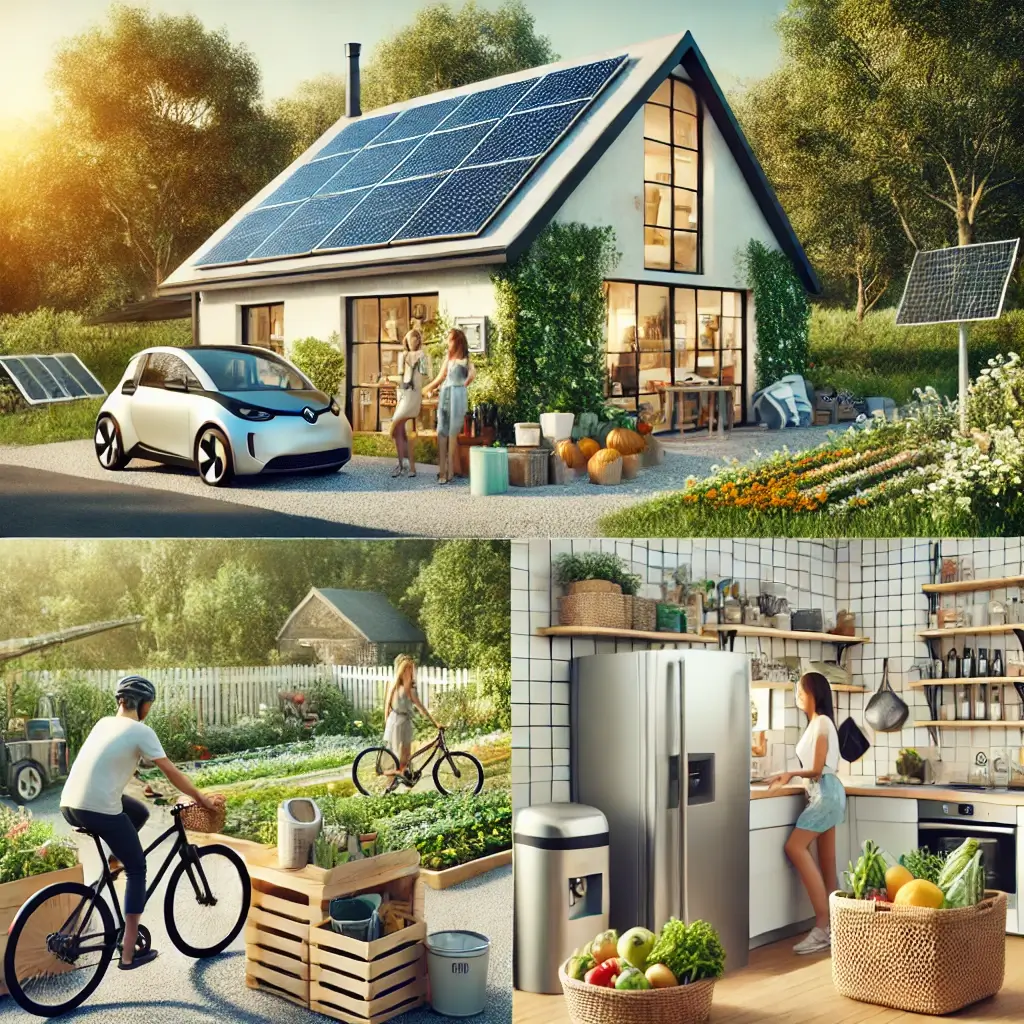-
How Digital Nomads Are Redefining Work and Lifestyle 🌍💻
Mar 06, 2025 | 38 Comments -
How Artificial Intelligence is Transforming Healthcare 🏥🤖
Mar 06, 2025 | 0 Comments -
How Cryptocurrency is Reshaping the Global Economy 💰🌍
Mar 06, 2025 | 0 Comments -
How to Build a Strong Personal Brand: Stand Out & Grow Your Influence 🚀📢
Mar 02, 2025 | 0 Comments -
The Power of AI in Business: How Artificial Intelligence is Transforming Industries 🚀🤖
Mar 02, 2025 | 0 Comments -
How Smart Homes Are Changing the Way We Live 🏡🔋
Mar 02, 2025 | 0 Comments -
How Electric Vehicles Are Revolutionizing Transportation 🚗⚡
Mar 02, 2025 | 0 Comments -
The Future of Renewable Energy: How Green Technology is Changing the World 🌍⚡
Mar 02, 2025 | 0 Comments

How to Build a Sustainable Lifestyle in the Modern World
How to Build a Sustainable Lifestyle in the Modern WorldAs environmental concerns continue to grow, adopting a sustainable lifestyle has become more important than ever. Living sustainably means making choices that reduce your environmental impact while promoting a healthier planet for future generations. This article provides practical steps to help you create a more eco-friendly lifestyle, covering areas such as energy consumption, waste reduction, and mindful consumption.
Understanding Sustainability
Sustainability is the practice of meeting our needs without compromising the ability of future generations to meet theirs. It involves finding a balance between environmental, economic, and social factors to ensure long-term health and well-being. A sustainable lifestyle incorporates habits and decisions that minimize harm to the planet, from conserving resources to supporting ethical businesses.
Reduce, Reuse, Recycle
The three R’s—reduce, reuse, and recycle—form the foundation of sustainable living. Here’s how you can integrate them into your daily life:
- Reduce: Minimize waste by avoiding single-use items, buying only what you need, and opting for quality over quantity.
- Reuse: Extend the life of products by repurposing or repairing them instead of discarding them. For example, use glass jars as storage containers or turn old clothing into cleaning rags.
- Recycle: Properly sort and dispose of recyclable materials to prevent them from ending up in landfills. Familiarize yourself with your local recycling guidelines to maximize effectiveness.
Energy Efficiency at Home
Reducing energy consumption is a key aspect of sustainable living. Small changes at home can make a big difference:
- Switch to energy-efficient appliances and LED light bulbs to lower your electricity usage.
- Unplug devices when they’re not in use to prevent phantom energy consumption.
- Install a programmable thermostat to regulate heating and cooling, saving energy and money.
- Consider renewable energy sources like solar panels to power your home sustainably.
Adopt Sustainable Transportation
Transportation is one of the largest contributors to greenhouse gas emissions. Choosing eco-friendly transportation options can significantly reduce your carbon footprint:
- Walk or bike for short distances instead of driving.
- Use public transportation or carpool to reduce the number of vehicles on the road.
- If you drive, consider switching to an electric or hybrid vehicle for a cleaner alternative.
- Combine errands into a single trip to minimize fuel consumption.
Mindful Consumption
Sustainable living requires thoughtful consumption of resources. Here’s how to make more eco-conscious choices:
- Support brands and businesses that prioritize sustainability, such as using ethical sourcing and eco-friendly packaging.
- Buy locally produced goods to reduce the environmental costs associated with transportation.
- Embrace a minimalist approach by focusing on quality over quantity, whether it’s clothing, electronics, or home goods.
- Choose reusable items like water bottles, shopping bags, and coffee cups over disposable alternatives.
Sustainable Eating
The food we consume has a significant impact on the environment. Making sustainable food choices can help reduce your ecological footprint:
- Incorporate more plant-based meals into your diet to lower the demand for resource-intensive animal agriculture.
- Buy seasonal and locally grown produce to support farmers and reduce food miles.
- Reduce food waste by planning meals, storing food properly, and composting scraps.
- Choose organic or sustainably farmed products whenever possible.
Engage in Community Action
Sustainability isn’t just an individual effort—it requires collective action. Joining community initiatives and advocating for change can amplify your impact:
- Participate in local clean-up drives to help maintain natural spaces.
- Support policies and organizations focused on environmental conservation and sustainability.
- Share your knowledge and inspire others to adopt sustainable practices.
- Join community gardens or local food co-ops to promote sustainable agriculture.
The Role of Technology in Sustainability
Technology plays a vital role in building a sustainable future. From apps that track energy consumption to smart home devices that optimize resource use, modern innovations make it easier to live sustainably. Consider incorporating technology into your lifestyle to streamline your efforts:
- Use apps that calculate your carbon footprint and suggest ways to reduce it.
- Install water-saving devices like low-flow showerheads and smart irrigation systems.
- Leverage platforms that connect you with sustainable products and services.
Overcoming Barriers to Sustainability
Building a sustainable lifestyle can be challenging, especially when it feels overwhelming or inconvenient. Here are tips to overcome common barriers:
- Start small by focusing on one or two changes at a time. Gradual progress leads to lasting habits.
- Educate yourself about the environmental impact of your choices to stay motivated.
- Seek support from like-minded individuals or communities to stay inspired and accountable.
- Remember that perfection isn’t the goal—every step toward sustainability makes a difference.
The Future of Sustainable Living
As awareness of environmental issues grows, more individuals, businesses, and governments are prioritizing sustainability. Innovations in renewable energy, waste management, and green technology are paving the way for a more sustainable future. By embracing these advancements and adopting eco-conscious habits, we can collectively create a healthier, more resilient planet.
0 comments
No comments yet. Be the first to comment!
Your comment